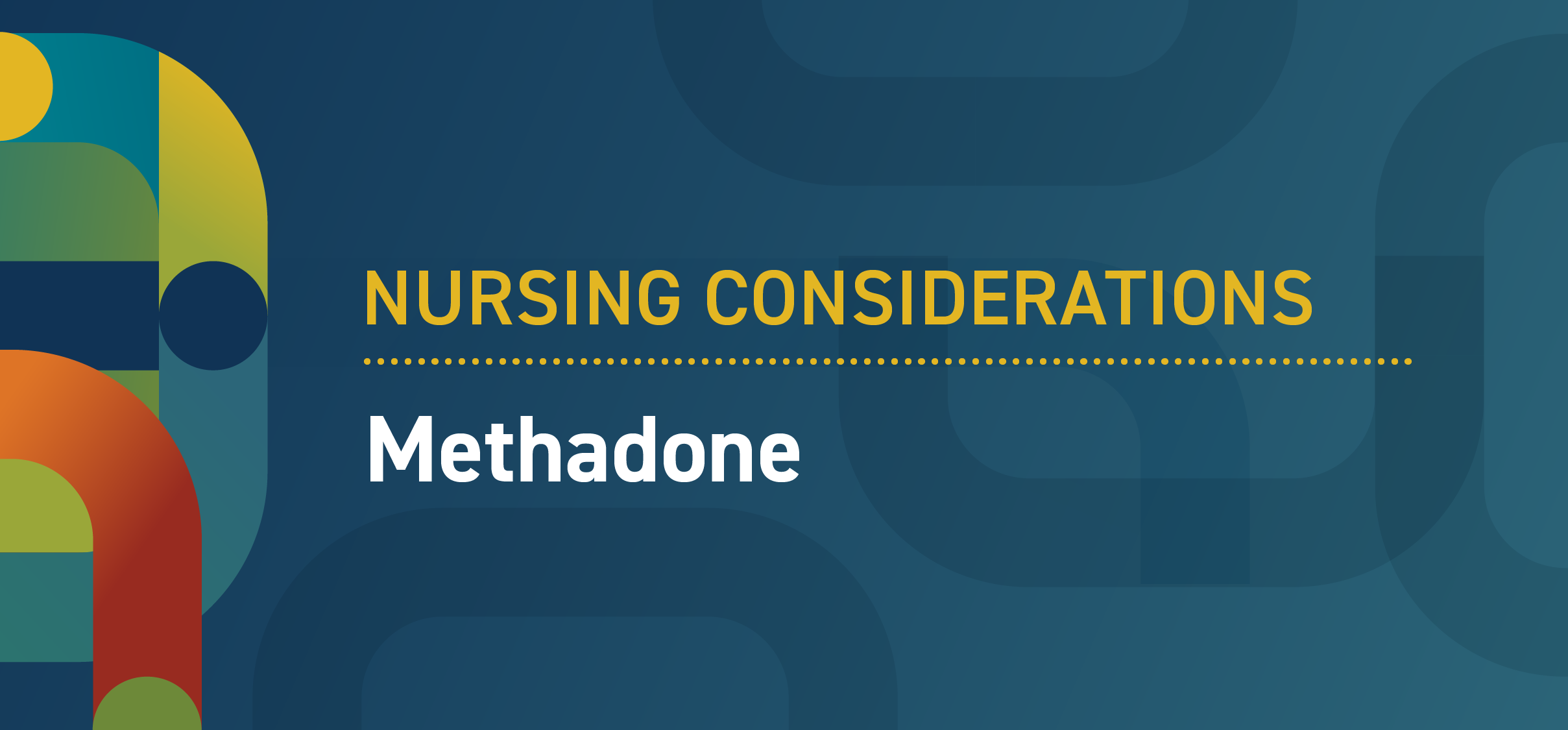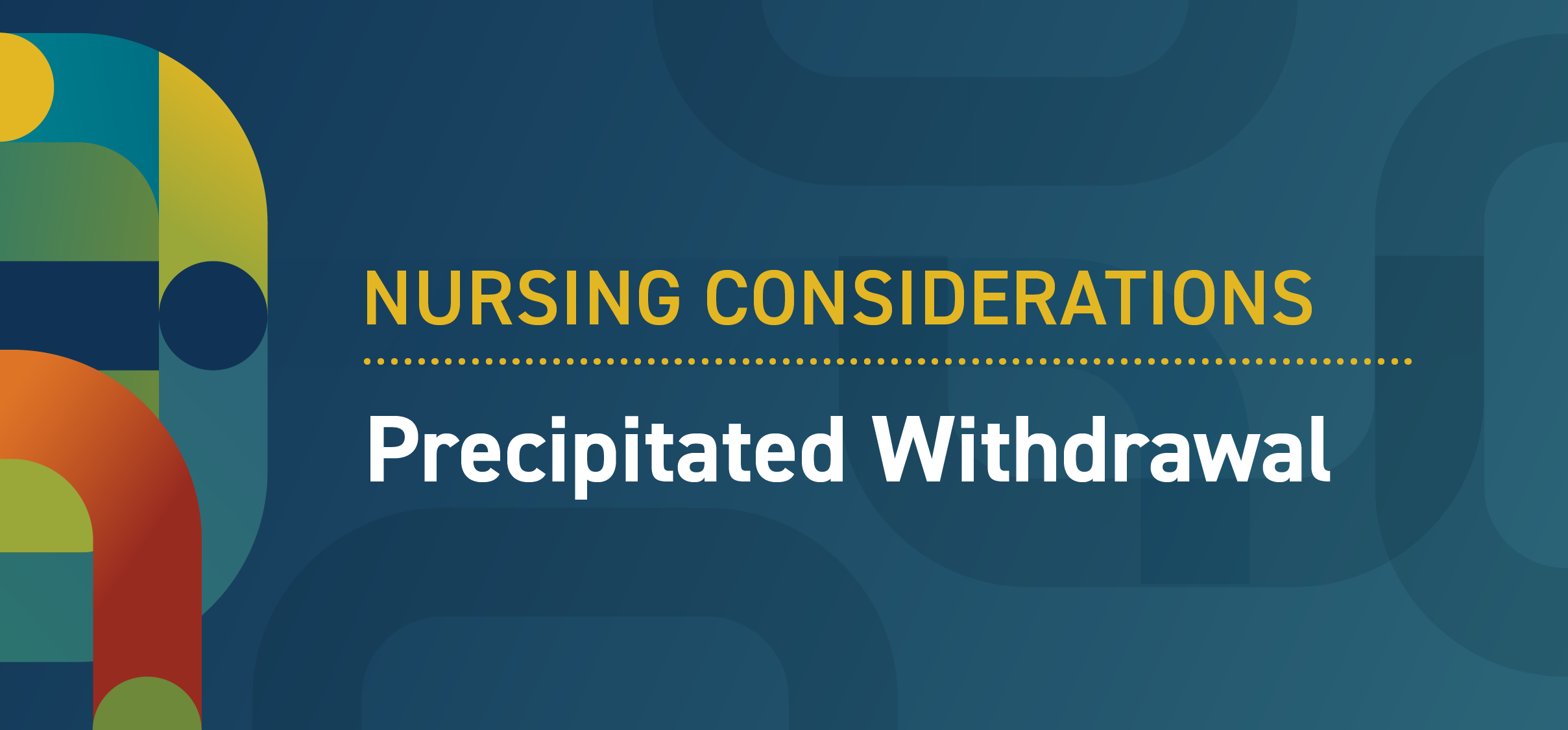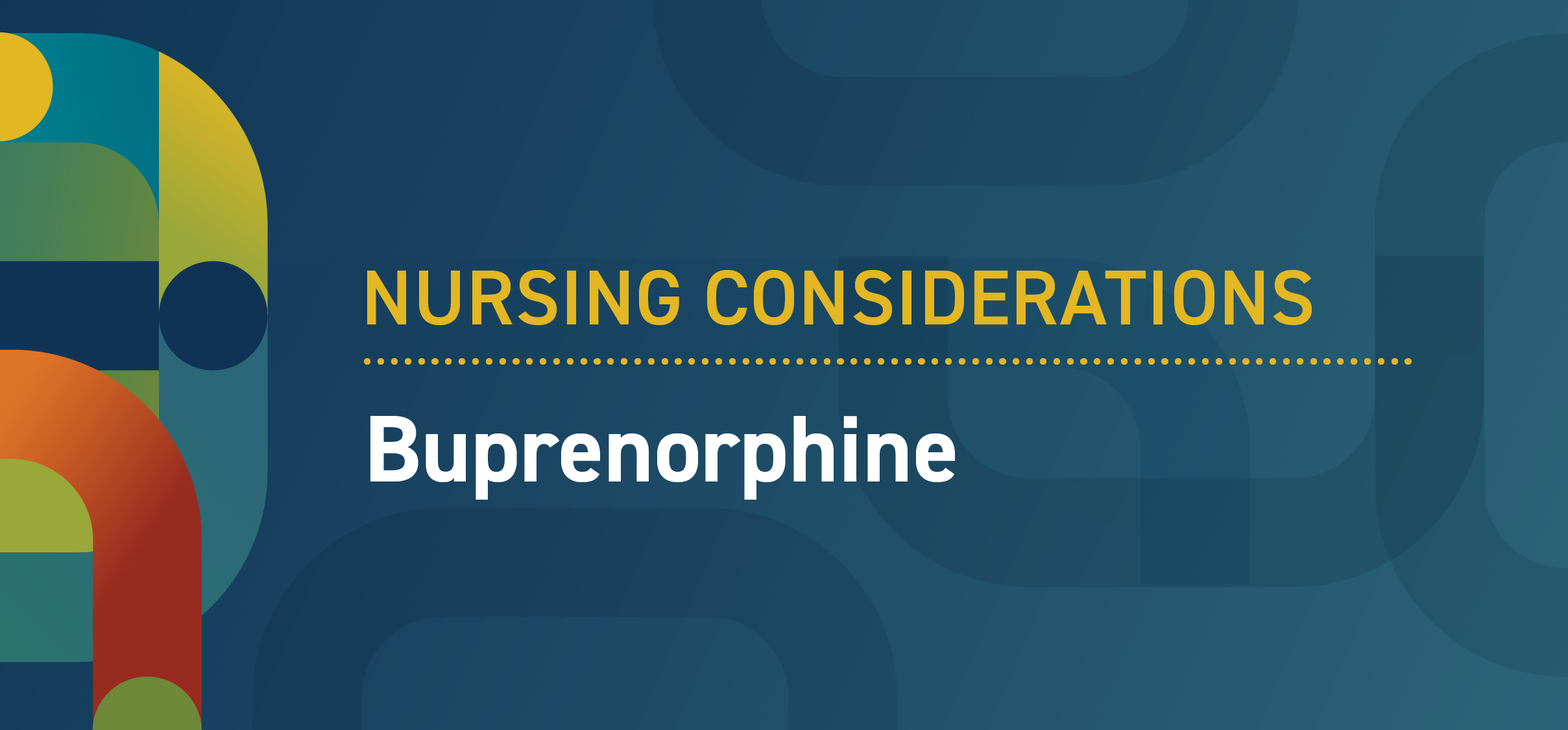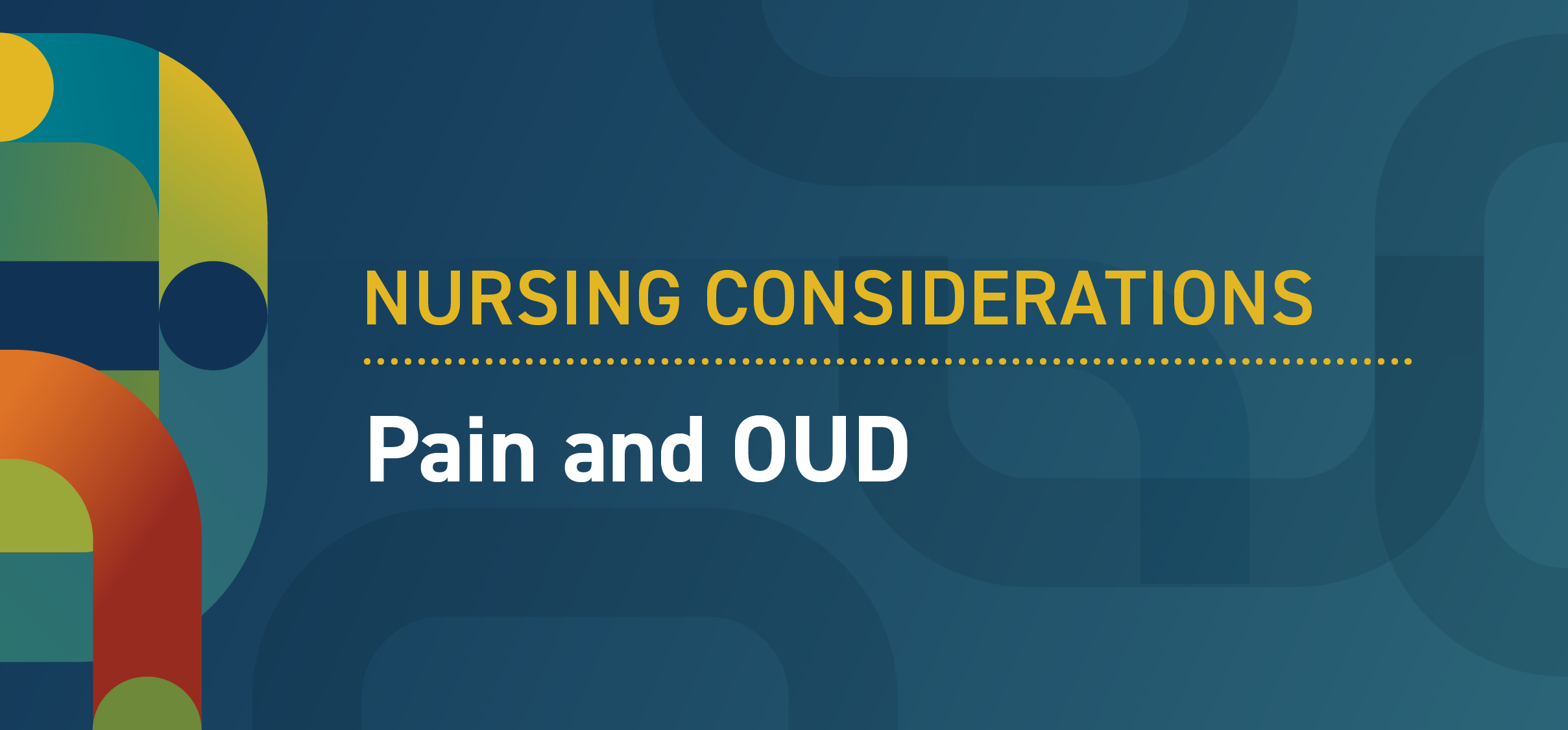FOR NURSING
Nursing considerations - methadone

Background
- Methadone is a life-saving medication; it significantly reduces the risk of all-cause mortality for people with opioid use disorder (OUD).
- Methadone treats opioid use disorder by preventing withdrawal symptoms and reducing craving. When taken as directed methadone reduces the need for an opioid and gives individuals a chance to stabilize their lives. Methadone is a safe and effective medication that can be used for long term management of opioid use disorder.
- Federal rules allow for hospitals to provide methadone to treat opioid withdrawal and initiate medications to treat opioid use disorder. Patients can be discharged with up to a 3-day supply of methadone for OUD if they are referred to an opioid treatment program (OTP) for ongoing care.
- Patients must return to the OTP daily to receive their dose.
- If a patient is unable to connect with an OTP for ongoing care, they should not start methadone. Explore buprenorphine as a treatment option instead.
- Because of the cumulative effects of methadone, which is a long-acting opioid, methadone doses are started low and slowly up-titrated until an adequate dose is achieved over days or weeks.
- Withdrawal can be excruciating; patients are at high risk of returning to their regular opioid use during this time without adequate intervention and support.
- Patients commonly need adjunct medications to control withdrawal symptoms until an adequate dose is achieved.
- Methadone can cause respiratory depression when taken at high doses or combined with other sedatives. People should not increase their dose of other sedative medications, drink more than their usual amount of alcohol, or use other drugs while starting methadone.
- Patients may need to take a day off from their regular activities while adjusting to the medication.
- Opioid use disorder is a treatable health condition. It often takes multiple treatment attempts for patients to recover. Stopping substance use is extremely challenging. Patients should be supported regardless of how many times they ask for help. Even the most severe cases do recover.
- Patients with OUD or other substance use disorders experience a great deal of stigma and often have high levels of anxiety related to previous negative healthcare experiences. Research shows that stigma, bias, and even perceived judgement worsens symptoms and prolongs recovery. It’s vital to treat patients in a caring and supportive manner.
Hospitals in Washington are required to hand naloxone (not a prescription) to people with OUD or those who are otherwise at risk of opioid overdose.
Discharge planning
- Ask the patient if they have previously been established with an OTP and where they would like to receive ongoing care.
- Educate the patient on the expectation of daily dosing at an OTP. After a period of time, they will start to receive “take-home” doses. Make sure they understand this medication can only be obtained from an OTP.
- Connect the patient to care at the OTP: Provide information on where to go and when, sign ROI if needed, and fax referral paperwork that includes the dose received in the ED and what doses they were discharged with.
- Ensure patients have plans in place to go to the OTP before they run out of methadone.
- Advocate for patients to receive adequate adjunct medications to treat withdrawal symptoms.
- Provide the patient with discharge instructions that include time of last dose, and when to take the next dose. Symptoms may be better controlled with b.i.d. dosing. Ensure patient understands importance of taking the medication every day at about the same time.
- The patient should not drive or operate heavy machinery until they are used to the medicine. Provide a work note if needed.
- Educate the patient on the risks of taking other sedatives with methadone.
- Ensure patient is discharged with naloxone. Provide overdose prevention education. Ensure patient is aware that changes in use patterns can alter tolerance and increase risk of opioid overdose.
Overdose prevention patient education
Using street drugs is risky. If you do use, reduce your risk of dying from an opioid overdose with the following:
- Naloxone
- Today you received naloxone or a prescription for naloxone. This is an opioid overdose reversal medication. It is safe to use on anyone you suspect is experiencing an opioid overdose. Visit stopoverdose.org or talk to your provider, nurse, or pharmacist to learn more.
- If someone is unresponsive or has unusual or no breathing, call 911 and give them naloxone and rescue breaths.
- Tell others you have naloxone, where it is, and when and how to use it, so they can help you if you need it.
- Try not to use alone.
- If you must, use a confidential service like the Never Use Alone phone line or the Brave app. These peer-led services will send someone to help if you stop responding during a chat or phone call
- Start low & go slow.
- You can't know the complete contents or strength of street drugs. If you plan to use, start with a small amount to see how it affects you. If you have low tolerance (such as after a period of not using), be extra cautious. If you decide to use more, slowly increase by using small amounts at a time.
- Watch and wait before next person uses.
- If you’re with a group of people, take turns to see how the product is affecting people. Someone needs to be able to ask for help, if it’s needed.
- Avoid mixing drugs.
- Mixing drugs increases your risk. If you do use multiple drugs, try to use one at a time and use less of each.
- Treatment with methadone or buprenorphine.
- These medications, if taken as directed, reduce the risk of death by over 50%.
- If you need help finding a treatment provider, call the Washington Recovery Helpline at 866-789-1511 or go to warecoveryhelpline.org.






 I’M A CLINICIAN
I’M A CLINICIAN I’M A PATIENT
I’M A PATIENT